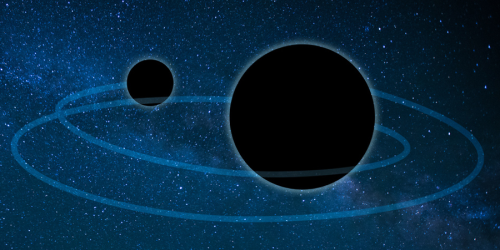Merged Black Hole on the Run
When two black holes spiral into each other, we might imagine that all the energy gets swallowed up by the merger. Surprisingly, mergers can sometimes kick the final black hole away at a high enough speed to eject it from its host galaxy. Astronomers have seen hints of fast-moving black holes, but it wasn’t obvious that mergers were the cause. A new analysis of gravitational waves from a merger provides the first direct evidence of a strong kick [1].
Kicks are predicted to occur when the gravitational waves from a merger are emitted predominantly in one direction; to conserve momentum, the remnant black hole recoils in the opposite direction. This asymmetry can arise when the merging black holes have unequal masses or spins. Large kicks are expected when the merger’s orbital plane precesses, which is observable as an amplitude modification in the gravitational-wave signal.
Vijay Varma from the Max Planck Institute for Gravitational Physics in Germany and his colleagues analyzed merger GW200129, which is the first event to exhibit a strong, unambiguous signature of precession in its gravitational-wave data. The team compared the observed signal to predictions based on numerical relativity simulations and found that the final 60-solar-mass black hole received a kick of around 1500 km/s, which would likely shoot it out of its galaxy (the Milky Way’s escape velocity is 550 km/s).
The results have implications for the existence of heavy black holes, which physicists have explained through multiple-merger scenarios (see Viewpoint: A Heavyweight Merger). For this explanation to work, kicks must not be too common, as this would send black holes out of the galaxy where subsequent mergers are unlikely.
–Michael Schirber
Michael Schirber is a Corresponding Editor for Physics Magazine based in Lyon, France.
References
- V. Varma et al., “Evidence of large recoil velocity from a black hole merger signal,” Phys. Rev. Lett. 128, 191102 (2022).




